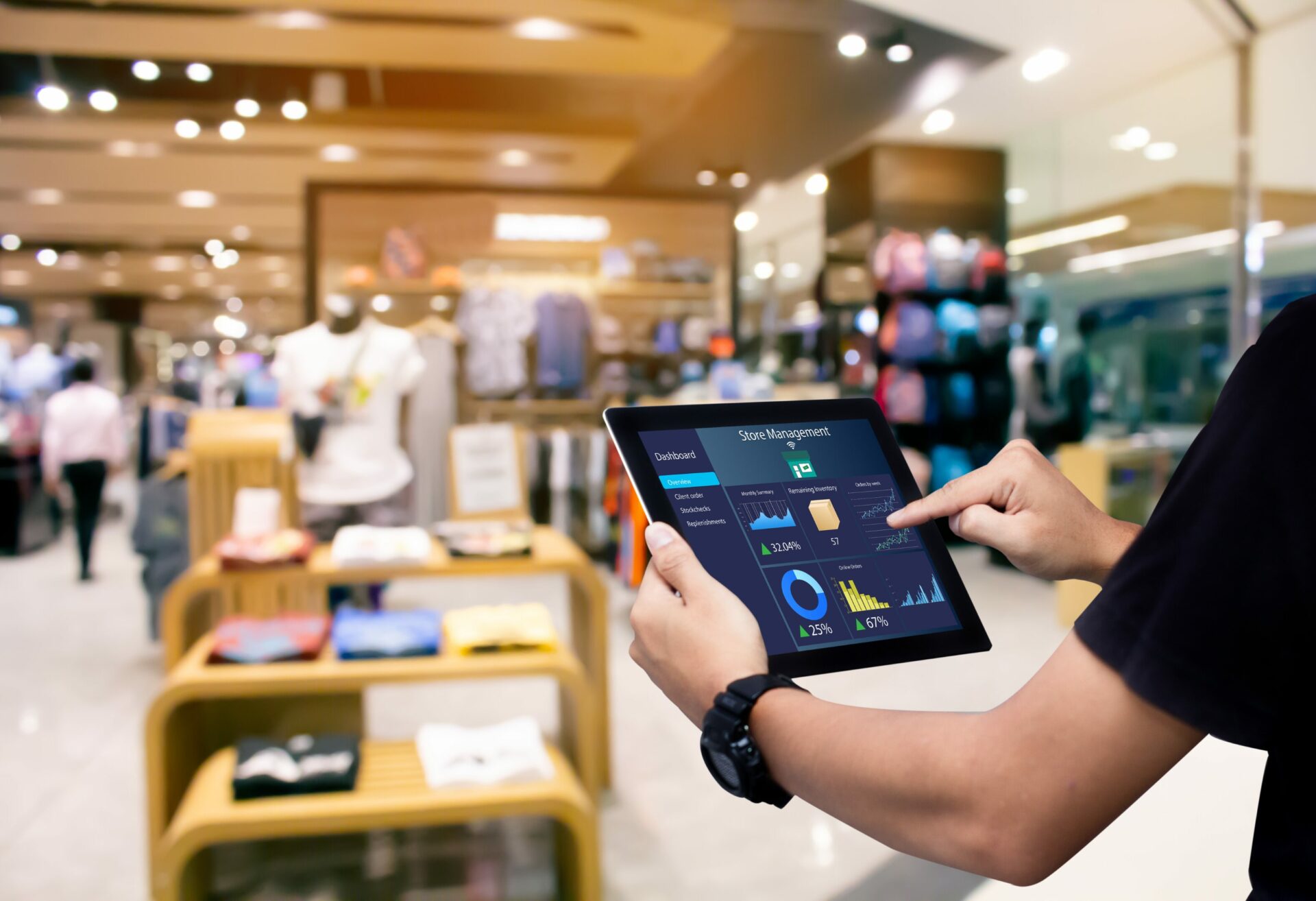Preventing in-store theft with intelligent RFID systems


In the world of fashion retail, every item matters: every size, every style, every display represents tangible value not only for the customer or the store, but also for the brand’s overall financial balance. Yet behind the apparent normality of in-store operations lies a dynamic that directly impacts performance and overall retail security: shoplifting is no longer an occasional event but a structural issue that undermines both profitability and stock accuracy. This is not just a matter of security – it’s a matter of margin.

In Europe, for instance, the Centre for Retail Research reports that the overall cost of retail crime — including customer theft, internal theft, and management errors — exceeds 26 billion dollars (around €21.3 billion) each year across the European area alone.
At national level, for example, in Germany the value loss from inventory discrepancies for 2024 has been estimated at around €4.95 billion, of which approximately €4.2 billion is attributed to customer theft, according to Euronews based on data from Euronews sulla base dei dati EHI Retail Institute.
In the United Kingdom, according to the British Retail Consortium (BRC), more than 20 million incidents of shop theft were recorded in stores in the period up to 31 August 2024, with a total cost to retailers of £2.2 billion (around €2.6 billion).
In France, the trade press reports annual losses of around €5.3 billion due to shoplifting, as cited by V4NA based on data collected from French retailers.
In Italy, the Crime&tech/Transcrime “Security in Retail in Italy 2023” shows that theft and inventory discrepancies make up a significant share of retail losses, although the data do not always provide a single aggregated figure specific to the fashion segment. These are not just numbers confined to reports: they represent items that never reach the sales floor, commercial opportunities that go to waste, and margins that never materialise. In the fashion sector, where seasonal turnover is rapid and inventory value is high, even a single percentage point of loss can result in a significant reduction in operating profit.
In other words: every item that doesn’t make it to the till has a real impact on the brand’s bottom line.
In fashion retail, theft doesn’t just affect store security – it directly impacts profitability. When an item never makes it to sale because it’s been stolen, what’s lost is not only the cost of the goods but also the expected margin, the investment in display, and, in some cases, the potential sell-out of a seasonal collection. Added to this is a less immediate but equally significant consequence: inaccurate stock. If the system shows an item as available but the customer can’t find it in store, the sale is lost, trust declines, and the shopping experience suffers.
The situation is made even more complex by the rise in organised theft, which no longer involves isolated incidents but rather structured groups operating with specific targets, focusing on the most valuable SKUs, brands, or seasonal items. In Germany, for example, around a third of shoplifting losses are attributed to forms of organised crime, according to Euronews. Added to this are the hidden costs: extra hours spent on checks, more frequent stocktakes, stricter security procedures, and additional staff training.
In other words, shoplifting is not just an issue linked to the shopping experience, but to the store’s overall security management. It is a genuine economic problem which, if not tackled with proper theft-prevention tools, ends up behaving like a fixed cost: it recurs, accumulates, and over time erodes the store’s overall profitability.

Addressing the issue of shop theft with structured tools means, first and foremost, restoring visibility where there is currently opacity. The adoption of RFID systems makes it possible to pinpoint which items are most at risk — not only by category, but by SKU, size, display area, and time of day. This enables a shift from generic measures to targeted action: rethinking the store layout, monitoring certain departments more closely, and revising the placement of high-value or high-theft items.
At the same time, real-time alerts through features such as App Guard allow store staff to be instantly notified when an item leaves the premises without being registered as paid. This is not about intrusive alarms or rigid control points, but a discreet system — based on RFID gates or underfloor antennas — that integrates prevention seamlessly into the shopping experience without compromising it.
The effect then extends to the operational core of the store: stock management. Every anomaly detected and addressed reduces the gap between theoretical and actual inventory, improving stock control and preventing so-called phantom out-of-stocks — situations where the system shows an item as available when, in fact, it isn’t. This leads to lost sales and customer dissatisfaction.
The end result is twofold: margin recovered thanks to fewer thefts, and operational efficiency through more accurate inventories, fewer errors, and smoother stock flow management. Tackling theft therefore means not only protecting merchandise but also safeguarding the store’s overall profitability.
Moving from awareness to action requires building a prevention model that brings together technology, processes, and people. It’s not about introducing barriers, but about enabling visibility and control — discreetly yet effectively.

1) Tag each item with RFID technology
Each item is equipped with an RFID tag that makes it identifiable and traceable throughout its entire lifecycle in the store — from arrival in the stockroom, to display, fitting room, and finally sale. This enables fast and accurate stocktakes, with simultaneous detection of large volumes of items. Inventory management thus becomes an operational lever, rather than an exceptional activity.
2) Install RFID gates or underfloor antennas at store exits
The critical moment for theft is the exit. Access control solutions based on RFID gates or antennas beneath the floor automatically detect the passage of items.
If the tag has been correctly deactivated at checkout, the customer’s exit experience remains completely uninterrupted. However, if the tag is still active, the system generates either a visual alert or a discreet notification to store staff, enabling quick and targeted action without making security feel intrusive.
In this way, the store maintains its aesthetic coherence, ensures a smooth customer journey, and upholds an integrated level of in-store security that is not perceived as a barrier.

3) Integrate the system with POS, ERP, and App Guard
The process is straightforward: active tag, payment at the POS, tag deactivated.
Aton’s RFID system integrates with POS, ERP, and retail management platforms. When an item passes through the exit without being recorded as sold, App Guard sends a structured alert containing the SKU, time, and exit point.
This integration also feeds reports and dashboards — such as lists of the “most stolen items” — providing valuable insights for strategic decision-making.
4) Monitoring, analytics, and targeted action
The data collected make it possible to identify patterns — which items are most at risk, on which days or at what times, and in which areas of the store. This enables smart, targeted interventions rather than generic ones, such as adjusting the micro-layout, relocating sensitive displays, or strengthening staff presence in critical zones. At the same time, stocktakes become faster and more accurate, reducing the number of missing stocks.
5) Change the mindset: from “let’s hope nothing gets stolen” to “let’s act on the signals”
The most important value is not technological but cultural: making theft visible, measurable, and monitorable.
Turning it from a silent loss into an operational KPI. In this way, what was once a shapeless problem becomes a lever for action — knowing which SKUs are stolen, when, and where allows targeted, structured, and sustainable intervention.
Beyond the direct impact of theft, as mentioned in the previous sections, there is another consequence — often less visible but equally significant for the store’s profitability: the discrepancy between the stock recorded in the system and what is actually available in store.
This is where the concept of shrink comes into play — the measure by which theft, along with other factors, distorts the balance between expected value and the value that can actually be sold.
When we talk about shrink (or shrinkage), we refer to the difference between what a store should have in stock according to its management systems and what is actually available on the shelves or in the stockroom. It is a discrepancy that can stem from various causes: customer theft, internal pilferage, inventory recording errors, untracked movements, or even goods damaged or lost along the supply chain.
A simple example explains it better than any definition: if at the start of the season the system records 10,000 items, but the physical count shows 9,800 and the missing 200 units do not correspond to recorded sales, that difference represents shrink. More importantly, it represents lost margin and less reliable stock management.
According to the National Retail Security Survey 2023 by the National Retail Federation, shrink in retail averages around 1.6% of total turnover. Applied to the scale of the European market, this percentage translates into billions of euros in lost value each year. At the same time, a survey conducted by Zebra Technologies in 2023 revealed that 85% of European retailers now consider shrink reduction a strategic priority, precisely because it has a direct impact on operating margin. However, it is important to make a distinction: shrink is an umbrella term. Within its definition coexist a variety of very different causes. Among these, theft — both external and internal — currently represents the most difficult component to control and the most costly from an economic standpoint. It is the dynamic part, the one that grows and evolves alongside consumer behaviour and the increasingly structured presence of organised groups.
Process errors can be reduced through training, automation, and proper controls; damage can be prevented with appropriate logistics and materials. Theft, however, follows dynamic patterns: it shifts targets, times, and the types of items affected. And in fashion stores — where the unit value of items is high and turnover is fast — the loss of even a few items can have an immediate impact on financial results.
In other words, not all aspects of shrink carry the same weight.
Theft is the one that hits the margin directly and immediately.
And that is precisely why addressing it does not mean “adding security”, but protecting profitability.

Let’s take a concrete example. A fashion retailer with a turnover of €465 million and a theft/shrink loss rate of 1.6% incurs around €7.44 million in losses each year. If the introduction of RFID systems and App Guard achieves even a 20% reduction, the recovery amounts to approximately €1.49 million annually.
This is not a theoretical figure: it represents margin regained, items returned to saleability, and stock restored to reliability.
In a European context where theft is on the rise and criminal organisations are becoming increasingly structured, investing in prevention systems is not an additional cost — it is a profitability lever. The difference lies between suffering the loss or reclaiming the value.
In today’s world of smart retail, theft is no longer an unavoidable risk: it is a variable that can be managed and reduced when tackled with data, technology, and structured processes. Integrated solutions based on RFID, combined with alert systems such as App Guard and continuous in-store monitoring, enable a shift in focus from “how much are we losing?” to “where should we intervene, and with what priority?”.
The result is tangible: fewer thefts, greater stock accuracy, recovered margins, and a smoother shopping experience — free from physical barriers or customer friction. At a time when operating costs are rising and margin pressure is intensifying, investing in theft prevention is not about adding an extra layer of security, but about protecting the store’s economic model and its capacity to generate value.
In other words, addressing theft is not merely about installing anti-theft systems — it is about safeguarding business sustainability. It is not a defensive measure, but a competitive lever.
An intelligent security management approach — based on RFID technology, RFID gates, App Guard, analytics, and shared processes — makes it possible to build a secure stockroom, reduce in-store theft, ensure safe operations, and improve profitability.